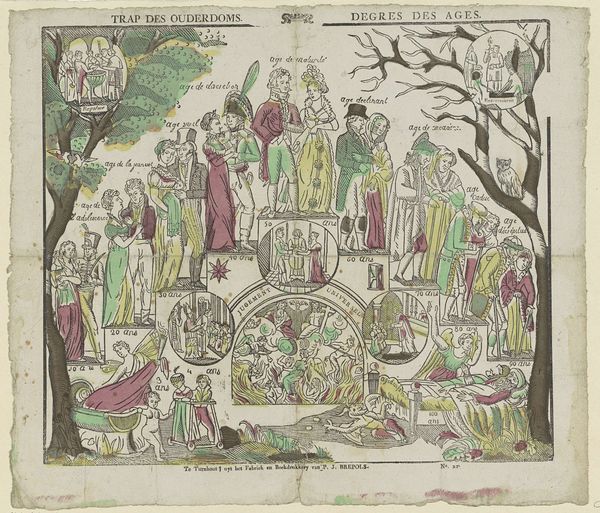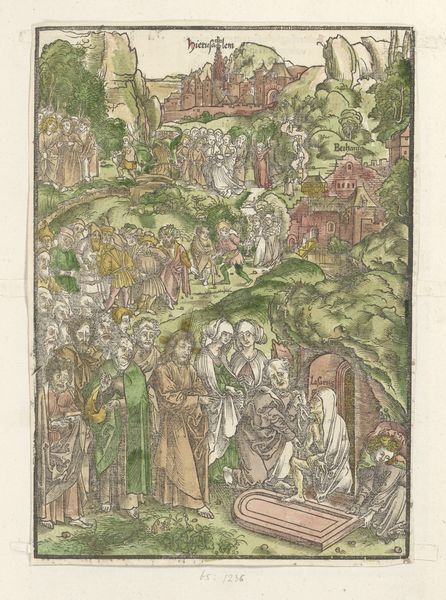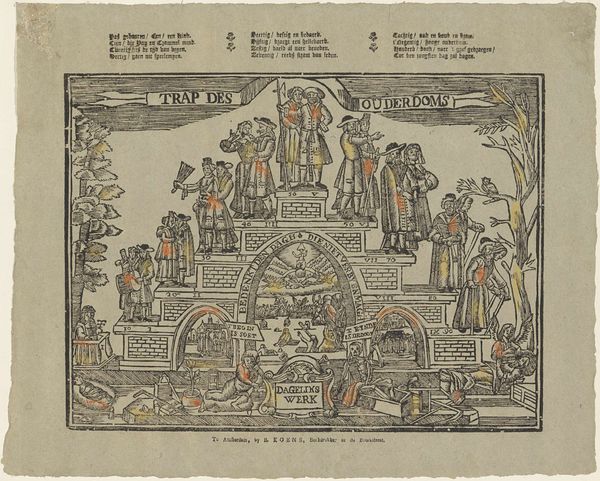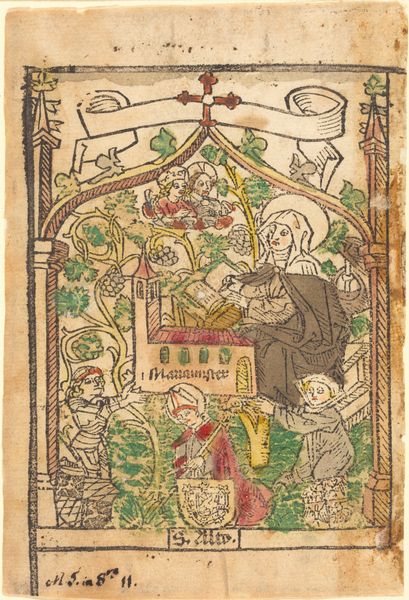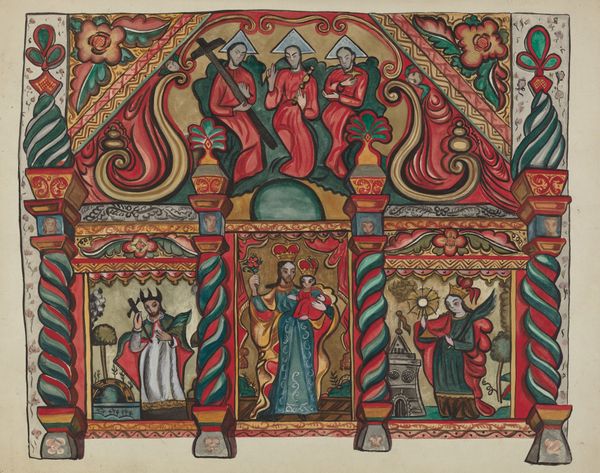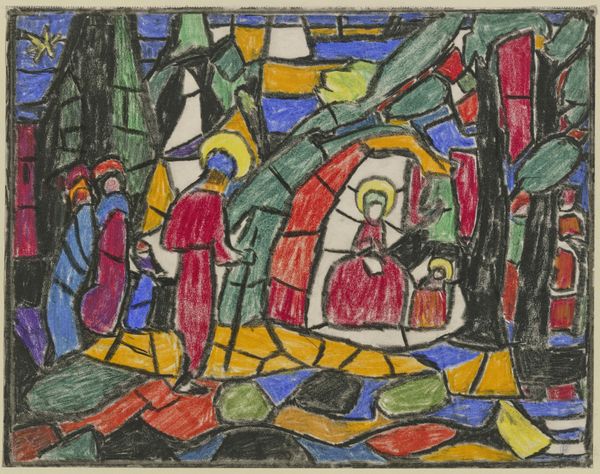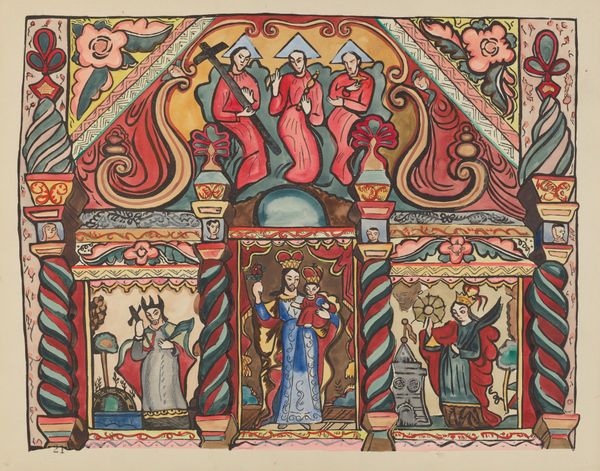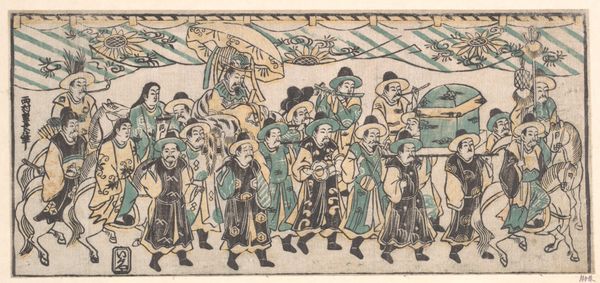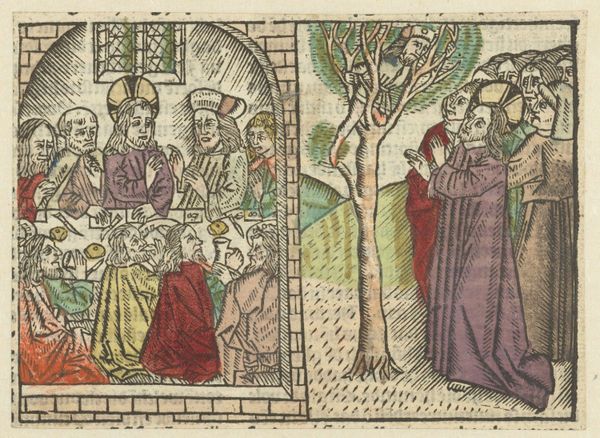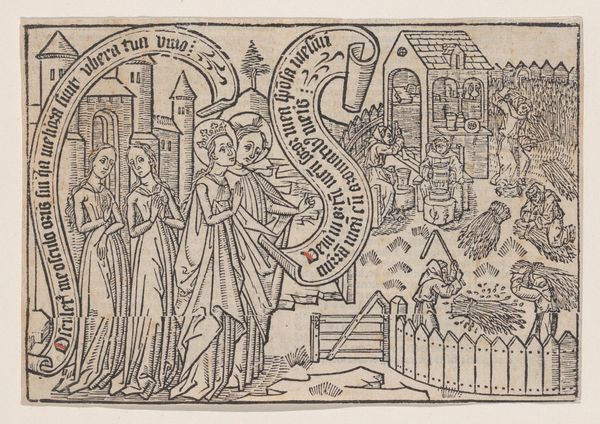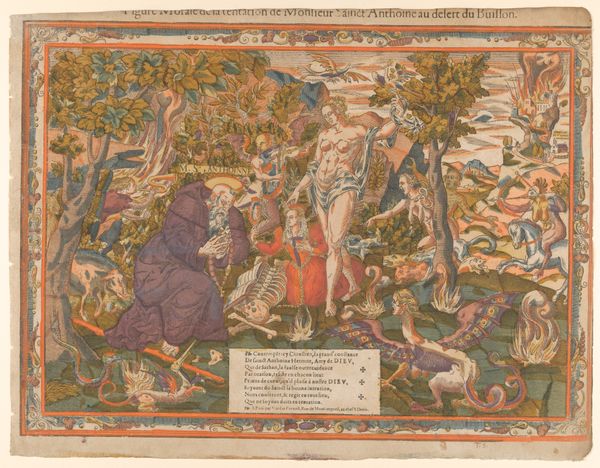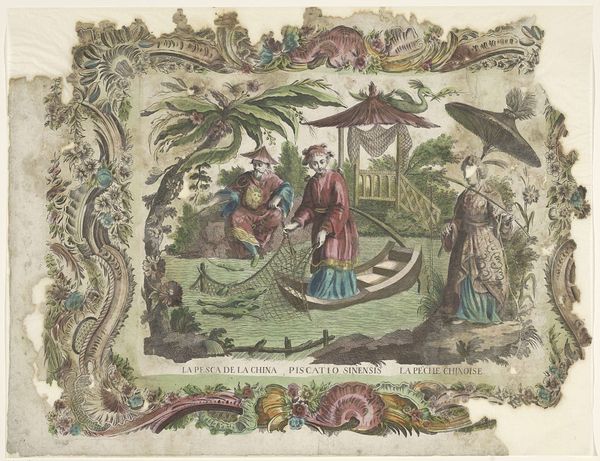
print, engraving
#
allegory
# print
#
landscape
#
figuration
#
linocut print
#
romanticism
#
line
#
genre-painting
#
history-painting
#
engraving
Dimensions: height 326 mm, width 380 mm
Copyright: Rijks Museum: Open Domain
Editor: This is "Trap des ouderdoms / Degrés des ages" by Philippus Jacobus Brepols, dating from around 1800-1833. It's an engraving, currently held at the Rijksmuseum. What strikes me is how neatly divided it is, almost like a game board depicting the stages of life, ending quite dramatically. How do you interpret this work? Curator: It's fascinating how this print functions as both art and social commentary. Considering the historical context, think about the rise of print culture during this period. These images circulated widely, shaping public perceptions of morality and societal norms. The 'trap of old age' isn't just a personal decline; it's a reflection on the responsibilities and expectations placed on individuals by society at each stage of life. Notice the visual language – are there any recurring motifs or compositional choices that suggest a particular viewpoint? Editor: Well, there's a clear progression upwards and then down again, visually reinforcing the cycle of life. The little scenes within each stage, from infancy to old age, are quite detailed too. I suppose that it invites the viewer to compare each representation of life to its time in History. Curator: Precisely. It highlights the performative aspect of age – how we are expected to act, dress, and contribute at different stages. Also, reflect on who might have consumed this image. Was it intended for the wealthy elite, or a broader public? The answer shapes our understanding of its purpose and impact. How does the use of allegory in the different scenes relate to a social commentary? Editor: Ah, that makes me think about how it generalizes experiences for educational and political motives. The allegory speaks more about concepts than specific real lives. Curator: Exactly, by employing allegorical representations, Brepols made social commentary far easier for a wide array of literate audiences to read. It serves as both moral instruction and a snapshot of the societal concerns of its time. Editor: I hadn't considered how its widespread distribution contributes to shaping views, almost like visual propaganda for social order. Thanks, that adds so much depth to understanding the work!
Comments
No comments
Be the first to comment and join the conversation on the ultimate creative platform.
